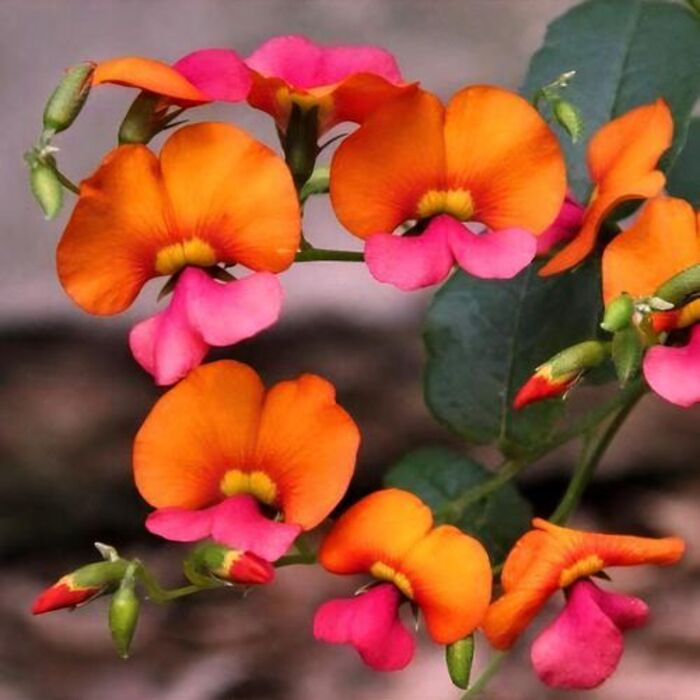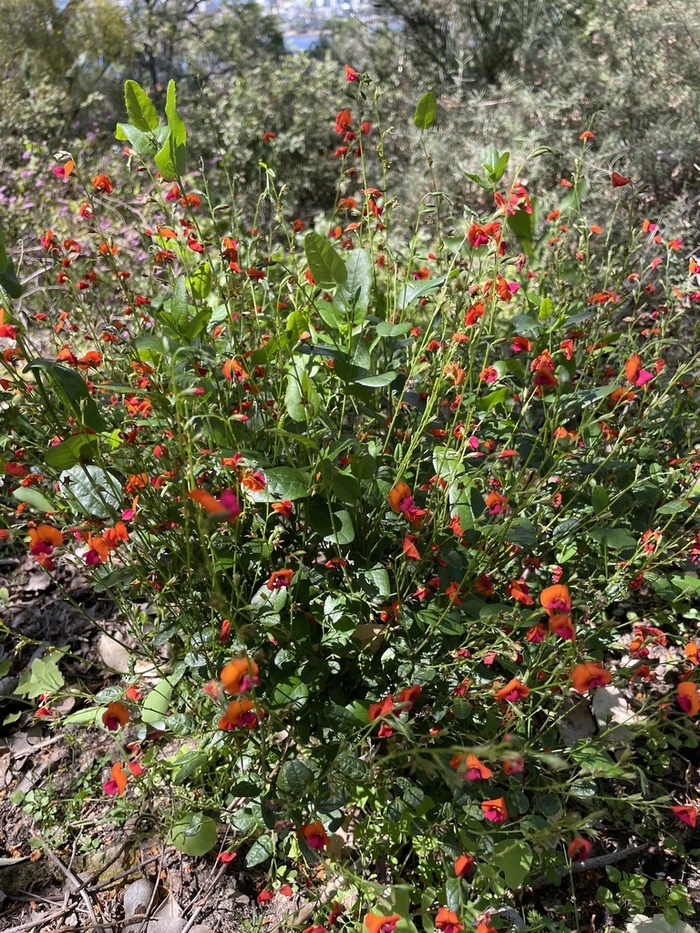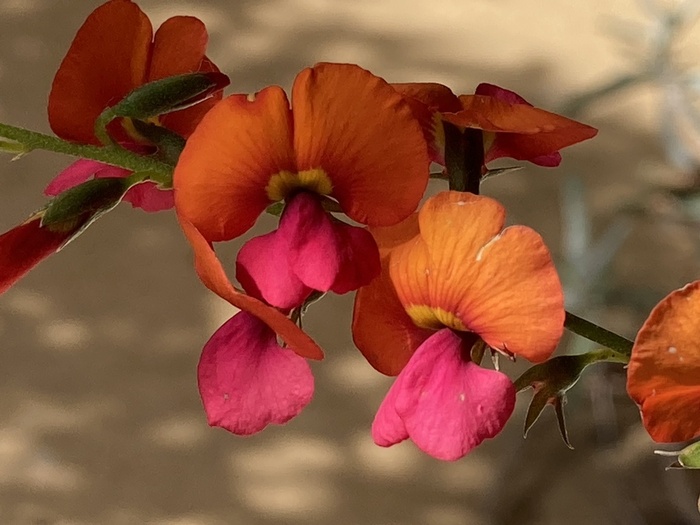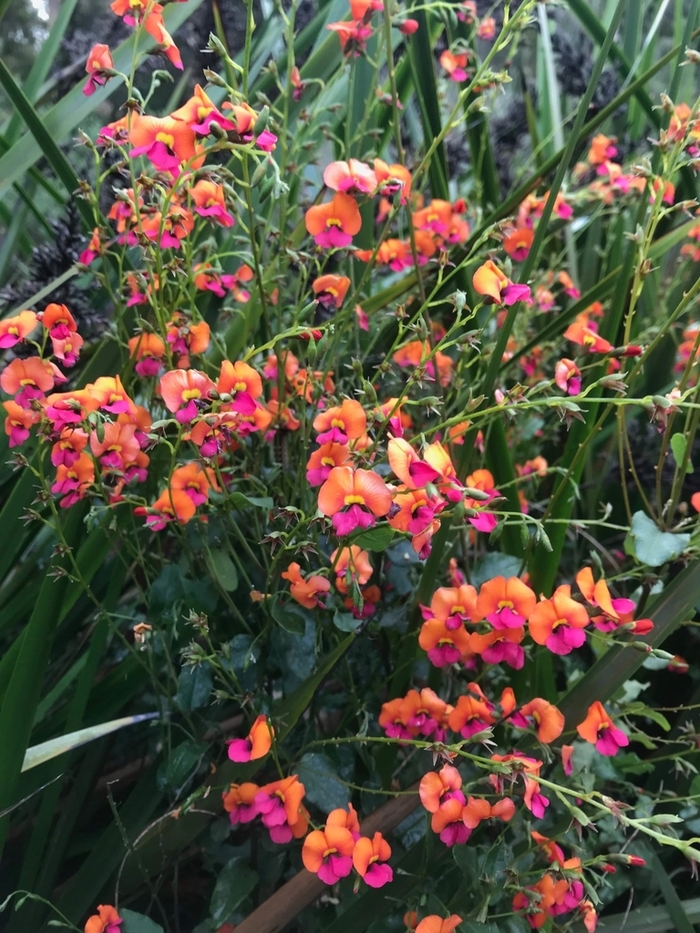Chorizema cordatum, commonly known as the Heart-leaved Flame Pea, is a striking Australian native plant that belongs to the Fabaceae (pea) family. Known for its vibrant flowers and distinctive heart-shaped leaves, Chorizema cordatum is an evergreen shrub that has garnered attention for its aesthetic appeal and unique characteristics. In this detailed guide, we’ll explore its taxonomy, physical traits, natural habitat, care requirements, and its significance in horticulture and ecology.

Chorizema cordatum is classified within the Fabaceae family, which is known for its leguminous plants that often have showy flowers. The plant belongs to the Chorizema genus, a group of Australian shrubs and small trees characterized by their brightly colored, pea-like flowers.
Kingdom: Plantae
Division: Angiosperms
Class: Eudicots
Order: Fabales
Family: Fabaceae
Genus: Chorizema
Species: Chorizema cordatum
Native to Western Australia, Chorizema cordatum thrives in the region's nutrient-poor soils, making it a great example of plants adapted to survive in tough conditions.

Chorizema cordatum is an attractive and compact shrub that typically grows to a height of 1 to 2 meters. Its appeal lies not only in its vibrant flowers but also in its heart-shaped leaves and overall structure.
Leaves:
One of the most notable features of Chorizema cordatum is its heart-shaped leaves. These glossy, dark green leaves add texture and visual interest to the plant year-round. The leaf shape is relatively small, and the leaves are arranged alternately along the stems. The evergreen nature of the plant means it provides year-round foliage, offering constant greenery in gardens or landscapes.
Flowers:
The flowers of Chorizema cordatum are small but striking. They feature bright, orange to red petals with a subtle yellow center, forming an eye-catching display that blooms primarily in spring. The pea-like flowers grow in clusters and are shaped like a flame, giving the plant its common name, Flame Pea. The flower clusters are held above the foliage, making them visible and attractive to pollinators, especially bees and birds.
Growth Habit:
Chorizema cordatum grows as a woody shrub with a slightly bushy form. Its stems are typically green when young but become woody and slightly lignified as the plant matures. It is a relatively slow-growing plant that may take several years to reach full maturity, but its dense, upright growth pattern and striking blooms make it a beautiful focal point in a garden.

Chorizema cordatum is endemic to Western Australia, where it thrives in the sandy soils of the region’s coastal scrublands and heathlands. It is particularly well adapted to the Mediterranean climate of the region, characterized by hot, dry summers and cool, wet winters.
Habitat:
The plant grows in nutrient-poor soils and is often found in areas where there is limited rainfall, making it well-suited to drought-prone conditions. Chorizema cordatum is typically found in sandy heathland or open woodlands with good drainage and exposure to full sunlight.
Climate Preferences:
The plant prefers mild to moderate temperatures and does best in areas with a Mediterranean climate. It requires well-drained soils and tolerates periods of drought once established. However, it should not be exposed to heavy frost, as it may not survive in extreme cold conditions.
Although Chorizema cordatum is native to Australia, it can be grown successfully in a variety of regions, especially those with similar Mediterranean climates. Here are some tips for growing this lovely shrub:
Soil Requirements:
This plant thrives in well-drained soils that are slightly acidic to neutral. It does not do well in heavy clay soils, as this can lead to waterlogging, which is detrimental to the plant’s roots. It’s ideal to grow Chorizema cordatum in sandy or loamy soil that mimics its natural habitat in Western Australia.
Light:
Chorizema cordatum thrives in full sun or partial shade. It requires at least 6 hours of direct sunlight per day to encourage optimal flowering. However, it can tolerate some light shade, particularly in areas with hot summer conditions, where afternoon shade can help reduce stress on the plant.
Watering:
This species is relatively drought-tolerant once established, but regular watering is required during the first few years to promote healthy growth. During the growing season, water the plant deeply but infrequently, allowing the soil to dry out between waterings. In winter, reduce watering, as the plant goes into a dormant or semi-dormant state.
Fertilization:
Chorizema cordatum is not a heavy feeder, but it benefits from occasional feeding with a balanced, low-phosphorus fertilizer. Over-fertilizing can lead to excessive growth at the expense of flowering, so it’s best to apply fertilizer sparingly.
Pruning:
Pruning is important to maintain the plant’s shape and remove dead or damaged wood. After the flowering season, you can lightly prune the shrub to encourage new growth and keep it tidy. Be sure to avoid heavy pruning, as this may reduce the number of flowers in the following season.

Chorizema cordatum plays an important role in the ecosystems of Western Australia, providing food and habitat for local wildlife. Its vibrant flowers attract a variety of pollinators, including bees, butterflies, and birds, particularly honeyeaters.
In horticulture, Chorizema cordatum is prized for its unique appearance and vibrant, long-lasting blooms. It is often cultivated as an ornamental shrub in gardens, landscapes, and parks, especially in Mediterranean-style gardens or native plant gardens. Its hardy nature makes it an excellent choice for water-wise gardening, as it can withstand drought conditions once established.
Focal Point:
Chorizema cordatum is a perfect plant for creating a focal point in a garden. Its unique, heart-shaped leaves and bright flowers make it stand out against other plants.
Ground Cover:
When planted in clusters, it can serve as a beautiful ground cover, particularly in areas with dry, well-drained soils. It complements other native Australian plants such as Grevillea and Banksia.
Container Gardening:
Due to its compact growth habit, this shrub is well-suited for container gardening, making it an excellent choice for patios, balconies, or small urban gardens.
Chorizema cordatum is a stunning and versatile plant that embodies the spirit of Australia's natural beauty. With its heart-shaped leaves and vibrant flame-like flowers, it is an exceptional choice for gardeners looking to add a touch of native Australian charm to their landscape. Whether grown in a Mediterranean garden, native plant collection, or as a container plant, Chorizema cordatum offers both aesthetic appeal and ecological value, attracting pollinators and adding color to any space.
References:
“Australian Native Plants: A Guide to the Plants of Australia,” Australian National Botanic Gardens
“Gardening with Australian Plants,” The Royal Horticultural Society of Australia
“Chorizema cordatum: An Overview,” Australian Plant Society Journal
animal tags: Fabaceae
We created this article in conjunction with AI technology, then made sure it was fact-checked and edited by a Animals Top editor.